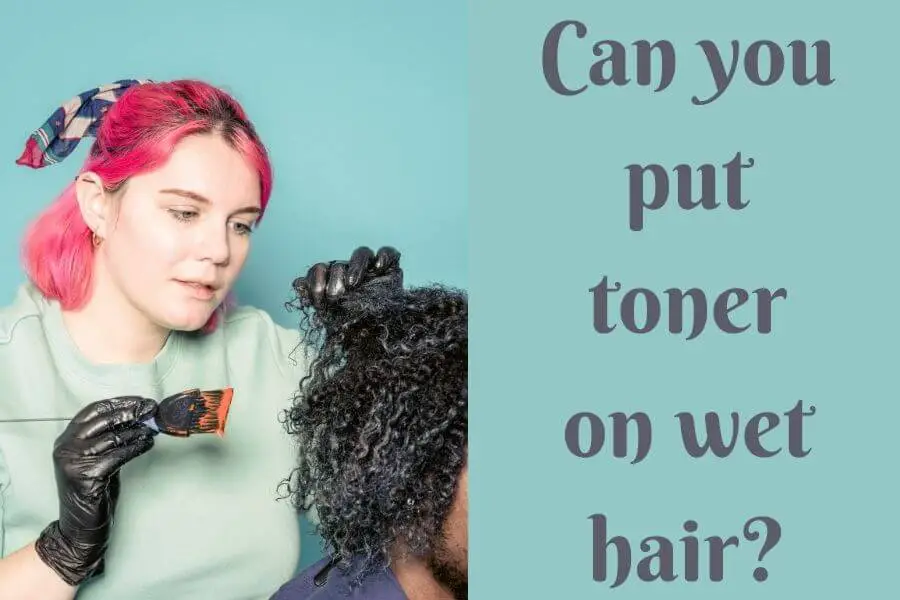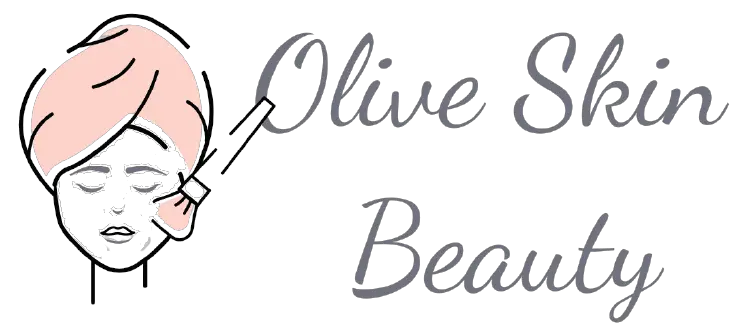If you’re like me, you’ve probably been told that you can’t put toner on wet hair. But is that really true? I did a little research and it turns out that there’s no hard and fast rule about this.
In fact, some people even say that toning your hair when it’s wet can actually be more effective than doing it when it’s dry. However, there are some things to keep in mind when doing so.
In this blog post, we will discuss the benefits of using toner on wet hair, as well as how to do it properly.

A toner is a rinse that you apply after shampooing to close the cuticles on your hair. The reason why this is necessary is that the cuticles are meant to protect the hair shaft against moisture evaporation, which is why it’s important that they’re closed tight. This helps lock in moisture and reduce frizziness, preventing your beautiful locks from becoming dry, damaged, and dull-looking.
You will have a much better result if you put a toner on damp hair rather than dripping wet or completely dry hair. Because damp hair is more porous, it allows the toner to spread easily and perform effectively.
Also, if you’ve used a clarifying shampoo, then chances are that the cuticles on your hair are already open. This makes it possible for you to tone wet hair in the first place since the cuticles wouldn’t need to be closed after shampooing.
How long do you leave toner on wet hair?
Depending on your hair type and the toner you’re using, leaving toner on for too long could actually damage your hair rather than help it look better. So how can you figure out how long to leave the toner on for maximum benefit?
Below is a quick guide to help you:
- Put a 1:2 mix of developer and toner in a bowl.
- To brighten and tone your hair, use an applicator brush to apply the solution to your locks, concentrating on the areas with undesirable undertones.
- Leave the toner in for up to 40 minutes, then wash it out with a mild shampoo and deep-conditioning treatment.
- For blonde hair, use 1.5 tablespoons of bleach and 2 ounces of toner for every 10 oz. of developer.
- Let the product sit on your hair for about 23 minutes. Rinse it out with cool water, then shampoo with a moisturizing shampoo to help prevent brittleness caused by bleaching.
Fine/light hair
2 minutes to get rid of brassiness and brighten up highlights.
You can also leave it on for 20 or 30 minutes if you have a stubborn case of brassy hair. If your hair is light, the longer you leave the toner on, the more effective it will get. However, if you have darker hair, it’s best to keep the toner on for a shorter amount of time.
Normal/medium hair
3-5 minutes to tone and brighten highlights.
You can also leave it on for 30-40 minutes if your locks have been discolored from being over-processed with color treatments, perms, and hair dye. If your hair is medium-toned, you can leave it on for a longer time compared to light-haired people – up to 50 minutes. Again, if your locks are dark, keep the toner on for a shorter amount of time.
Coarse/dark hair
5 or more minutes to tone and brighten.
This is best for people with darker hair since the longer you leave the toner on, the more effective it will be when it comes to removing brassiness and discoloration. Again, if your locks are light-colored, keep the toner on for a shorter amount of time.
Can you tone hair after dying it?
Toner can sometimes be used after a dye application that has gone wrong. It isn’t capable of changing your hair color, but it does provide uniformity.
So, yes you can tone hair after dying it. In fact, some people even say that toning your hair after the application of color is more effective in lifting out unwanted undertones.
However, there are a few things to keep in mind when doing so:
- Since the cuticles will already be open from dyeing or bleaching, toner will penetrate the hair shaft more easily.
- This makes it easier for toner to remove any undesirable undertones or deposits of color that may have been left behind.
- As mentioned earlier, the cuticles must be opened for effective toning to take place. But keep in mind that opening up your hair’s cuticles can leave it feeling dry and damaged if left untreated.
- Because dye deposits will already be on your tresses, you may want to opt for a clarifying shampoo after toning. This helps by removing any excess color that is left over.
Toning can also help close up the open cuticles on your hair, which makes it easier to retain moisture and keep your locks looking silkier longer.
Why is hair still brassy after toning?
When hair is bleached, the pigment that gives it its color, known as melanin, is oxidized. When bleach does not remove all of the underlying pigment from your hair, allowing warm tones to show through, brassiness becomes a problem.
This is why it’s important to lift it all the way up with bleach. If your hair still has yellowish undertones, you can tone your locks before applying a color that will neutralize them.
If you do not lift the bleach all the way up, your toner may turn out orange or brassy even after it’s rinsed. You can avoid this by lifting the hair to a pale yellow color before applying toner or using cool-toned hair dyes.
This does not work for permanent dyes since they are already in your hair. This works only for semi-permanent and demi-permanent toners.
However, if you do go in with a different color or tone after, be sure to let the bleach dry completely and use heat protection when applying and rinsing out any product.
Final Thoughts
As long as you make sure that the product has been completely rinsed off before drying, there’s nothing wrong with allowing toner to sit on wet hair. Just be sure to do this only after lifting all of the underlying pigment of your hair.
Always remember that it’s important to never leave any chemical treatment on for longer than recommended since this can lead to damage and breakage in the strands.
So keep these tips in mind when using toner on your tresses – whether wet or dry! It’ll ensure that you get the most out of every bottle so it lasts as long as possible.

